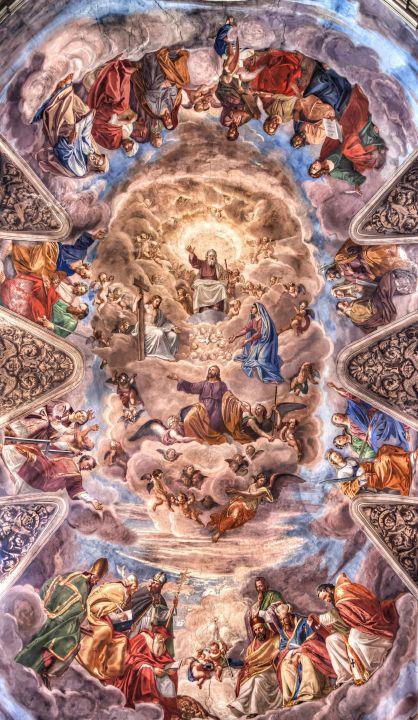The angel is one of the Articles of Faith as unshakeable as our belief in God, the atom, or the ill luck attached to the number 13. Numerous popular songs invoke angels in some way. Their images appear on Christmas cards and wedding invitations. They are kept as souvenirs, jewelry, and religious and quasi-religious bric-a-brac. People adorn their front lawns with small statues of them. Art museums are loaded with paintings and sculptures of these mysterious winged beings. To this day artists and writers depict them in their work. They have been the subject of several movies and TV series. They appear on jacket covers of musical CDs.
Since ancient times humankind has been intrigued by angels. They are awe-inspiring, luminous beings, who hover between God and us in their flight through spirit, imagination, and the universe. Psychologist like Carl Jung have devoted hours trying to explain why the angel still commands such attention, appearing in traditional forms and new age forms like channeling and extra-terrestrial visits.
But if you ask anyone if they really believe in their existence a deep conflict arises between positive assertion and current day secular realism. The sceptics scoff at the thought of a spirit world in general. Anything they can’t see or touch does not exist.
In a Gallup poll conducted in the United States in 1978, over half the subjects questioned about their belief in angels and demons answer in the affirmative. For the non-believers it can be assumed that belief in these supernatural creatures is outdated Gothic superstition for which there must be some scientific or psychological explanation.
These assumptions from believers and non-believes are more indicative about the confusion about angels which is inherent in our culture than about the actual truth about angels. It doesn’t matter whether the opinions come from religious institutions or new age thinkers. On the one hand angels still manage to retain their mystical popularity and power, while on the other no one really believes in them anymore.
 |
Throughout history, religions both primitive and developed, have held beliefs of spiritual beings that intervene between the one transcendental realm of the sacred and the mundane dualistic world of time and space. These beliefs in the supernatural realm go from that of belief in the power of ancestors, spirits of nature, or fairy beings from an alternate world to the spiritual beings called angels by the major religions of the world.
Nineteenth century novelist and critic Samuel Butler wrote that all reason is against belief in angels but healthy instinct is for it. This seems as true now as it was in biblical times, ten thousand years ago. The debate will wage on just as the one between atheists and believers in God.
